

Sadly, national statistics confirm each year the dangers associated with working at height, and although the figures for 2020-21 are likely to be lower due to COVID, work at height remains one of the main causes of serious injuries and fatalities in the workplace.
Anyone who is responsible for planning, managing or carrying out work at height has a duty of care to make sure the work can be carried out safely.
At Kee Safety we are committed to “separating people from hazards” and have worked with companies in all sectors to help them protect their workers, visitors and the general public. We understand the difficulties you face when it comes to the safety of those working at height so have created a hierarchy of control video which walks you through some simple steps to avoid falls from height.
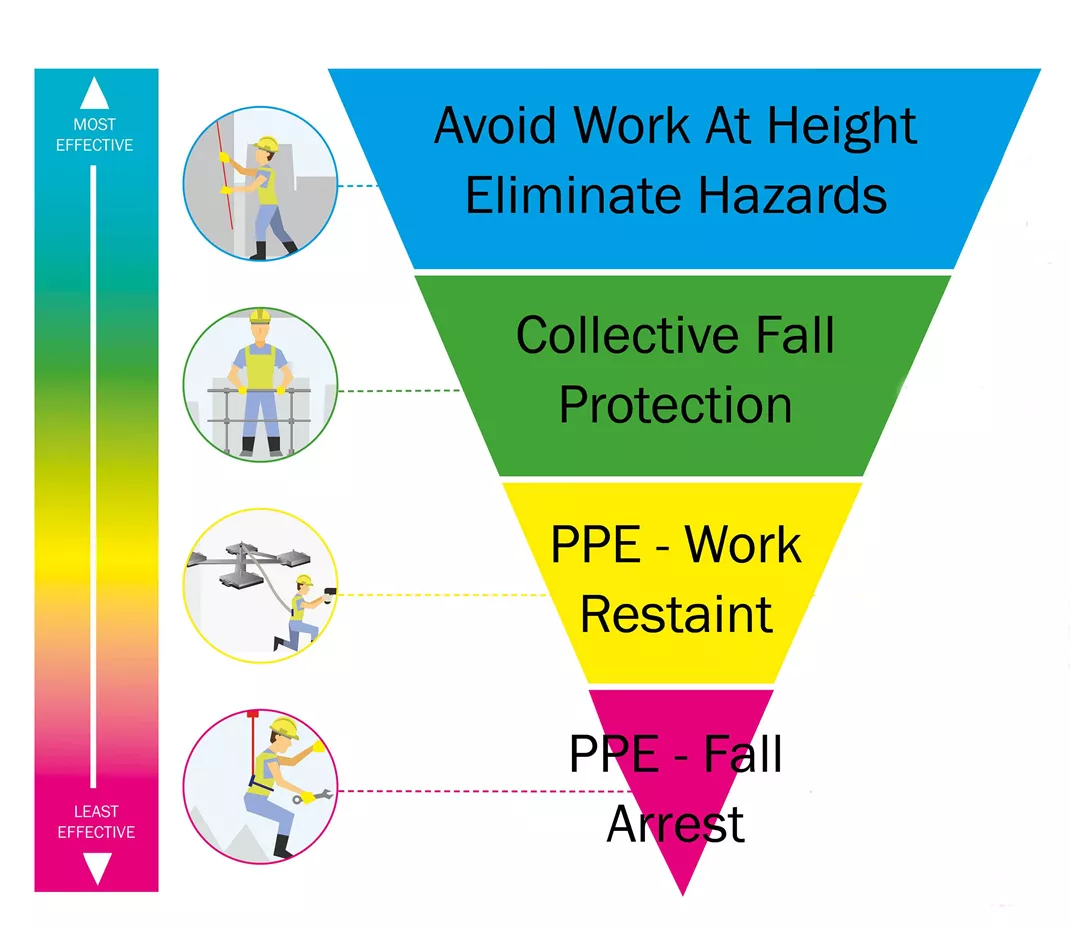
Our hierarchy of control is a 4 step process designed to help you understand what control measures should be in place to either eliminate or reduce fall hazards. These follow the easy to apply principles of avoiding, preventing and minimising supported by appropriate training.
Before you undertake any work at height task, you should ask yourself if working at height really is necessary. If it is then you need to take steps to ensure the work can be carried out safely.
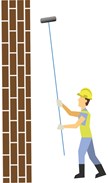 Removing the need to work at height by designing out risks or changing working practices should always be the main priority.
Removing the need to work at height by designing out risks or changing working practices should always be the main priority.
You can achieve this by simply eliminating the need to work at height completely. For example locating air conditioning units at ground level rather than on a roof or changing working practices by using a reach and wash system to clean windows in place of a ladder. Both of these simple changes will remove the need to work at height altogether.
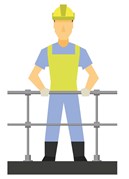 If work at height cannot be avoided, collective measures such as guarded platforms or edge protection will protect people from a hazard and prevent a fall.
If work at height cannot be avoided, collective measures such as guarded platforms or edge protection will protect people from a hazard and prevent a fall.
These options are the preferred method of protection as they protect everyone on a roof or where there is a hazard. They have the added benefits of not being reliant on correct usage, requiring minimum training, and needing little maintenance.
Collective protection is ideal when regular access is required to a roof or work area such as for routine maintenance of plant and equipment.
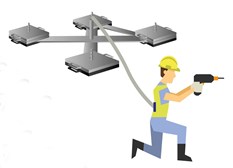 This is the final measure in preventing falls from height and involves the use of PPE (personal protective equipment). Often referred to as fall restraint, work restraint, or a restraint line, these systems typically comprise an anchor point and fixed-length lanyard. The objective here is to allow the user to move within a specified area but prevent them from reaching a fall risk or hazard.
This is the final measure in preventing falls from height and involves the use of PPE (personal protective equipment). Often referred to as fall restraint, work restraint, or a restraint line, these systems typically comprise an anchor point and fixed-length lanyard. The objective here is to allow the user to move within a specified area but prevent them from reaching a fall risk or hazard.
This method can be used when collective measures are not possible for general roof repairs, gutter maintenance, or when working beside a fragile unprotected rooflight.
Although the system is to be used as a restraint method, it must be designed to correct standards and tested to current fall arrest loads. This will ensure operatives are protected if the system is used incorrectly, for example, if the lanyard is too long to restrain the user from a fall risk.
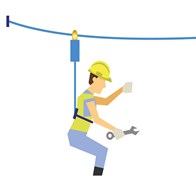 If all options to prevent a fall are not possible, then you should try to mitigate the consequences of a fall. In other words, arrest a falling person before they hit the ground or an object. This should only be used as a last resort when the first 3 safer steps have been ruled out and by those trained to use the equipment.
If all options to prevent a fall are not possible, then you should try to mitigate the consequences of a fall. In other words, arrest a falling person before they hit the ground or an object. This should only be used as a last resort when the first 3 safer steps have been ruled out and by those trained to use the equipment.
These types of fall arrest systems generally consist of an anchor point, lanyard, and a full body harness and allow the worker to move freely around a roof or where there is a fall potential. If the user falls, the system absorbs the shock and force placed on the body and decelerates the worker’s fall over a short distance.
Fall arrest systems are typically needed when work is carried out near the edges of a roof, where collective protection or restraint systems are not possible or practical.
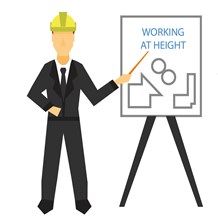 Competency is crucial when working at height. Most accidents happen because workers haven’t had the correct form of training so it’s essential that anyone working at height is given sufficient training and instruction to be able to carry out their tasks safely and competently.
Competency is crucial when working at height. Most accidents happen because workers haven’t had the correct form of training so it’s essential that anyone working at height is given sufficient training and instruction to be able to carry out their tasks safely and competently.
Training should include safe working practices as well as how to use equipment and inspect it in line with the manufacturer’s recommendations. It should not be a one-off event. Training levels must be maintained, and refresher training carried out at regular intervals for continued competency.
Work at height training is essential when it comes to fall arrest and restraint systems as these provide individual protection which means they are totally reliant upon the worker using the equipment correctly.
Only through correct training can a person be deemed competent to work at height.
Working at height is by its very nature dangerous. So before you undertake any task at height, ask yourself if the work at height is really necessary? If it is then following our simple 4 step hierarchy of control will help you to put in place the correct control measures to protect workers and minimise the risks.
These few simple steps can go a long way to providing a safe working environment.
And don’t forget, your duty of care doesn’t end with following the hierarchy and specifying the correct system. You also need to ensure that any equipment is checked and inspected regularly to be sure it’s in good working order and safe to use.
At Kee Safety, our expert safety professionals can help you to better understand your hazards both at height and on the ground. We can walk you through our hierarchy of control for work at height and carry out a free site survey to provide you with custom recommendations for your fall protection requirements.